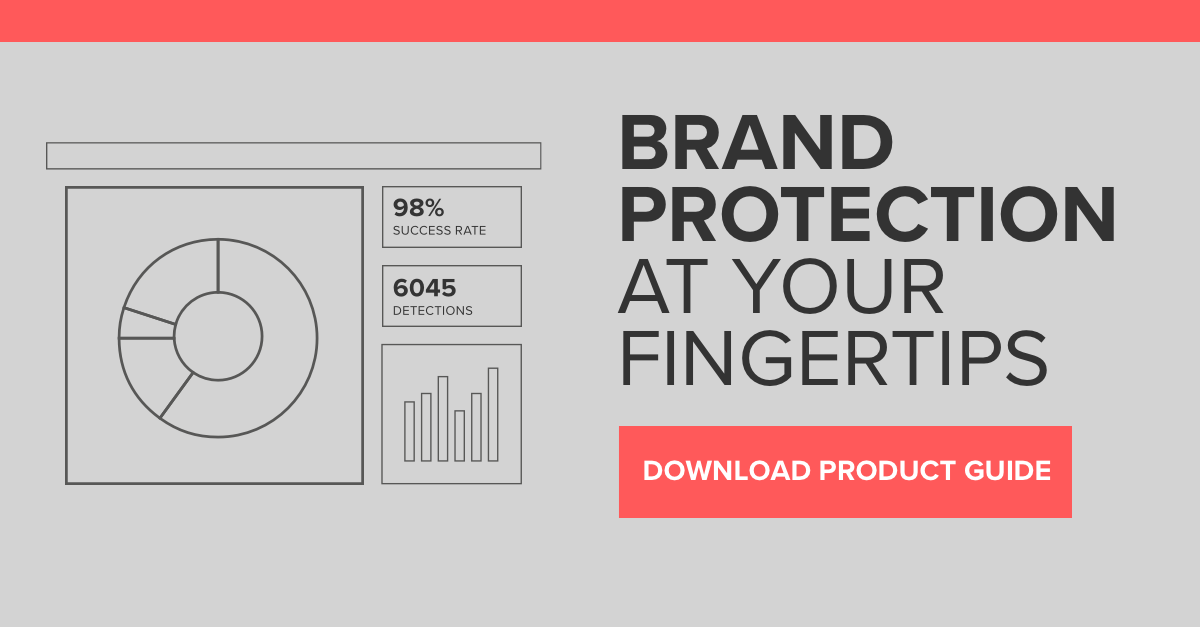You’ve just employed a brand protection solution for your business, so what now? How do you extract data to make useful long-term and short-term decisions for your business?
IP professionals spend great effort in finding the right provider, but in today’s data-driven environment, the best executives need to take IP data and turn it into an intelligent piece of information that can be used as part of the overall business strategy.
In this article, we look at which KPIs lP leaders should track, top tips when reporting brand protection efforts and how to magnify the impact of IP protection on their overall business strategy.
Summary:
- Data is a must for modern IP leaders
- Best practices to report and measure IP strategy
- How to use data to make IP a strategic weapon for your business
Why is data so important to modern IP leaders
The ecommerce market is a fast-moving and highly competitive environment. Beyond direct competitors, IP leaders are having to constantly monitor infringers to prevent them from stealing their hard-earned IP. Such incidents are rapidly increasing both in local markets and globally while the pandemic has possibly even intensified this problem. That’s why it is crucial for IP leaders to have the analytic munition to protect and manage their IP interests.
Furthermore, data is a major factor when it comes to allocating budgets. Gauging capital decisions for justifying investments or the extension of an IP portfolio, as well as securing allowances for the next fiscal year becomes easier with a solid database.
At the end of the day, IP leaders are pressured to show that IP actions deliver a good return on investment. Brand protection, whether it be online or offline, needs to contribute to the overall financial health of a brand. On that note, data can clearly show how and to what extent initiatives paid off.
5 ways to use data for your Intellectual Property strategy
#1: Make informed decisions, not assumptions
You want to make informed decisions, not assumptions, but how? Every business has specific priorities, and so does your report, your numbers should mirror this. Your data should also be actionable and deliver impact. Always use KPIs and metrics to connect the dots between seemingly isolated incidents, and root-cause infringing issues.
#2: Focus on results, not only activities
Brand protection software often provides you with a lot of numbers, but does the amount of infringing listings detected really matter as stand-alone data? Focusing on results achieved will be a lot more impactful. The infringement success rate, for instance, looks at the ratio of infringement detected vs. the ones that we actually removed.
#3: Communicate value in business terms
This helps you translate your IP efforts in a more business-friendly manner. The most common KPIs you should use are: the economic impact per IP rights and top infringing sellers, number of won litigation cases, ROI of potential IP portfolio extensions, and impact per jurisdiction.
#4: Provide context to your audience
Context matters, your audience won’t know what a good result is without this. Make sure to look at how your data is trending over time, to provide the full picture to whoever you’re presenting your results to.
#5: Educate your peer on the impact of your IP strategy
Make sure to associate brand protection work with business activities. Show how IP protection is part of the overall business strategy. Convey your thought leadership on IP-related problems in your industry. Educate on the difference between trackable and non-trackable metrics.
Ask yourself the right questions
When using data to make decisions for your IP strategy, you might want to ask yourself these questions:
1. Where are your products exposed the most?
This KPI is important because it reveals information on where to concentrate your brand protection actions. On a micro level, you can check a specific domain or marketplace you’re interested in. On a macro level, data in the form of a heatmap shows in which regions and jurisdictions you have exposure. Furthermore, you can see the financial impact of your actions and share the information with key stakeholders.
2. What new IP protection should you seek to obtain?
By asking this question, you’re tackling one of the most important KPIs. Within the brand protection process, it can happen that infringements are detected but impossible to remove because brands don’t have the respective IP rights. Such non-enforceable infringements can be used by IP leaders as the basis for communicating why the IP portfolio should be expanded.
3. How does the economic impact affect our own revenue streams?
Data not only shows the general economic impact of brand protection actions but also relates it to a company’s revenue streams. It reveals why investing in measures for detecting and enforcing infringements is justified and how it is being reflected in your own revenue streams. Moreover, data can be used in the internal communication with stakeholders for discussing a possible change in the IP strategy in relation to revenue.
4. Where can we identify and extract trends from our data?
Many brands are heavily exposed to seasonal events. Fashion brands may adjust new lines or sales offers to adapt to summer or Christmas season, for example. Events like Black Friday or Singles’ Day in China can play a significant role regarding the economic impact for a brand. Likewise, infringers activity increases during these dates. Data can show and analyze how infringers behave related to a company’s activity and observe what trends appear over time.
Conclusion
In today’s fast-changing e-commerce market, it is crucial for IP leaders to use data to communicate and justify their overall strategy to stakeholders. This is because managing an IP portfolio in a data-driven environment, allocating budgets and delivering a good ROI is becoming increasingly difficult for IP leaders.
Having outlined best practices on how to use data for an IP strategy, we have seen that data is capable of improving your KPIs. Moreover, data can be turned into a powerful tool that provides deeper insights on how to manage your IP strategy, identify trends and understand how the impact of your brand protection actions ultimately affects your revenue.






